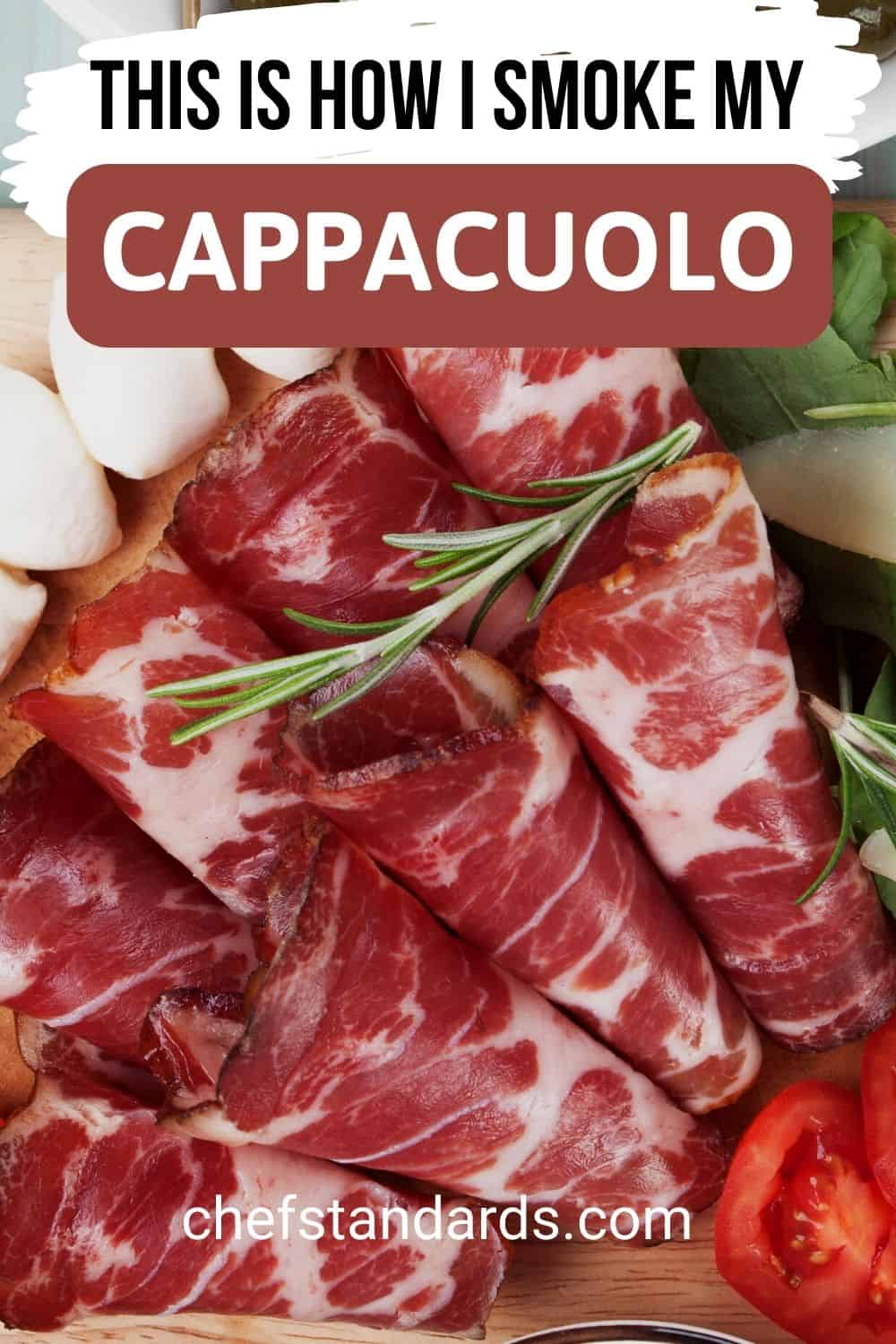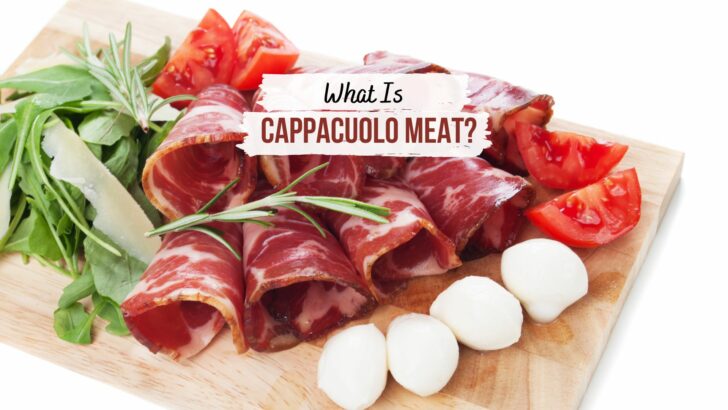You have probably heard about prosciutto, the dry-cured meat made from pork that originated from Italy. Its less-known relatives also come from Italy and it is dry-cured as well.
It is known by several names, including Cappacuolo, Cappacollo, and Capicola. This is cured meat made from pork shoulder or neck, and it is dry-cured with salt, sugar, and nitrates, keeping it fresh for a long when stored properly.
It is a flavorful appetizer that can be enjoyed on various occasions, mostly on meat platters. So if you want to know everything about this Italian classic, its flavor profile and culinary uses, as well as how to make it, you have come to the right place.
All About Cappacuolo Meat
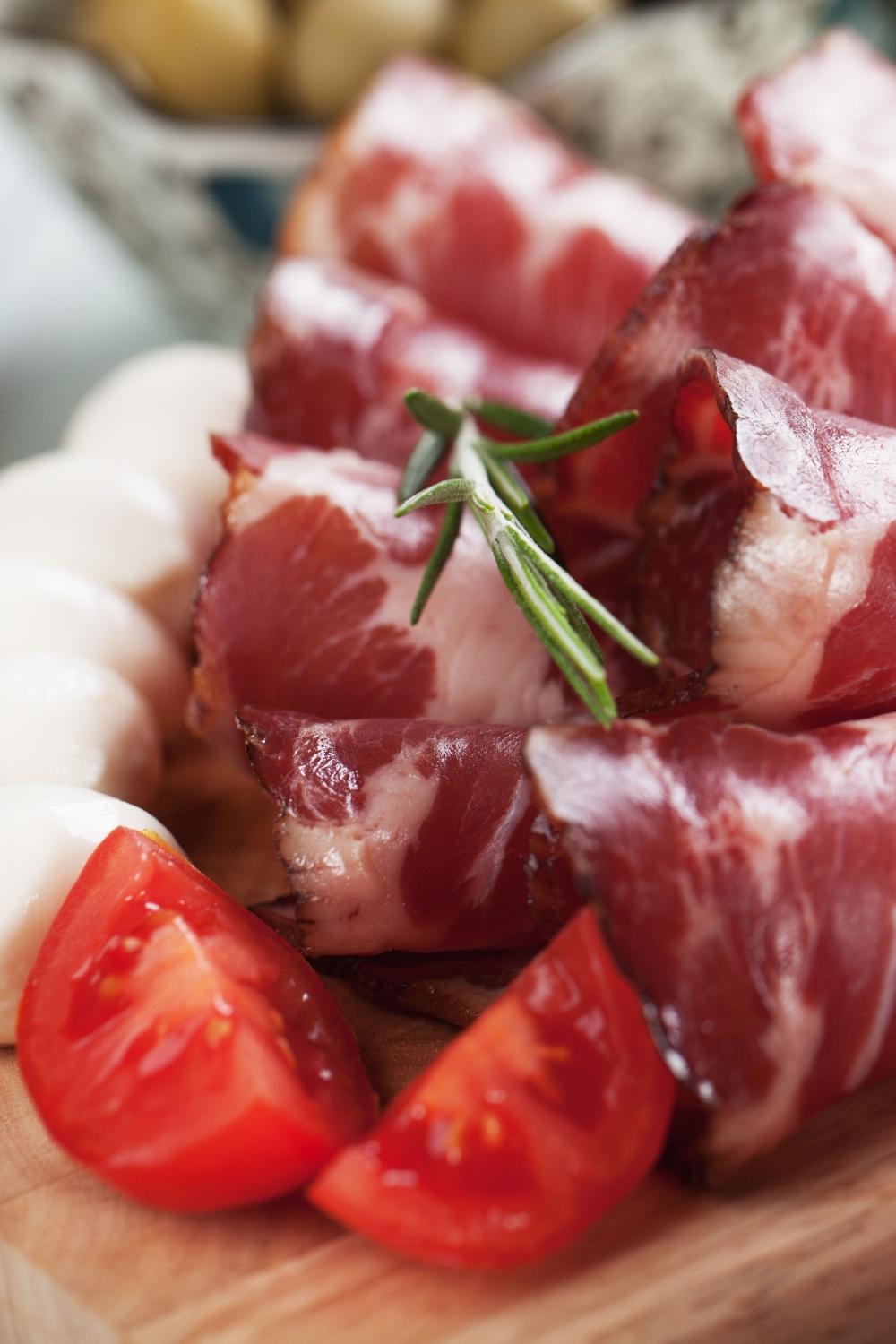
Cappacuolo or Capicola is one of the best substitutes for everyone’s favorite prosciutto, and some people actually prefer it.
It is produced by the dry curing process, a traditional Italian technique, that involves the use of salt, sugar, and nitrates. Salt and sugar are there to draw out moisture from the meat, while nitrates are used to inhibit bacterial growth.
The part of the pork that is used for making this specific type of meat is the muscle running from the neck to the fourth or fifth rib of the pork shoulder.
The word “cappacuolo” comes from the Italian word “capo”, which means head, and “cuollo,” which means neck.
The roots of Capocollo can be traced back to the rustic countryside of Italy, where preserving meat was essential to sustain communities throughout the seasons.
As early as the Roman era, ancient Italians developed techniques to cure pork shoulder and neck cuts, making the most of their abundant pork supply.
In modern times, Capocollo continues to be revered as an iconic Italian culinary offering and a popular ingredient in Spuntini.
Its popularity has transcended borders, finding its way into international markets and influencing the global culinary landscape.
The Art of Making Capocollo
At the heart of crafting Capocollo lies the selection of the prime cut – the pork shoulder or neck. This choice cut, with its ideal balance of marbling and tenderness, forms the foundation of the final masterpiece.
Meticulously trimmed to remove excess fat and connective tissue, the meat is prepared for the next crucial steps in the curing process.
To infuse Capocollo with its signature flavors, a combination of salt, spices, and sometimes the flavors of wine or other flavorings are meticulously applied onto the meat’s surface.
Each artisan may have their secret blend of spices, often including black pepper, fennel seeds, garlic, and other regional ingredients, resulting in nuanced flavor profiles.
Once seasoned, the meat is carefully wrapped, tying it into its characteristic cylindrical shape, which aids in the even distribution of flavors during the curing process.
Traditionally, the wrapped Capocollo would be hung in a cool, dry cellarr storage room, allowing the slow transformation which took several months.
The magic of Capocollo lies in the process of dry-curing and aging. During this time, moisture is gradually drawn out of the meat, intensifying the flavors and creating its distinct texture.
As the weeks pass, the Capocollo develops its unique marbled appearance and takes on a beautiful pinkish-red hue, which can be found on meat platters all over the world.
Flavors and Aromas Of This Italian Classic
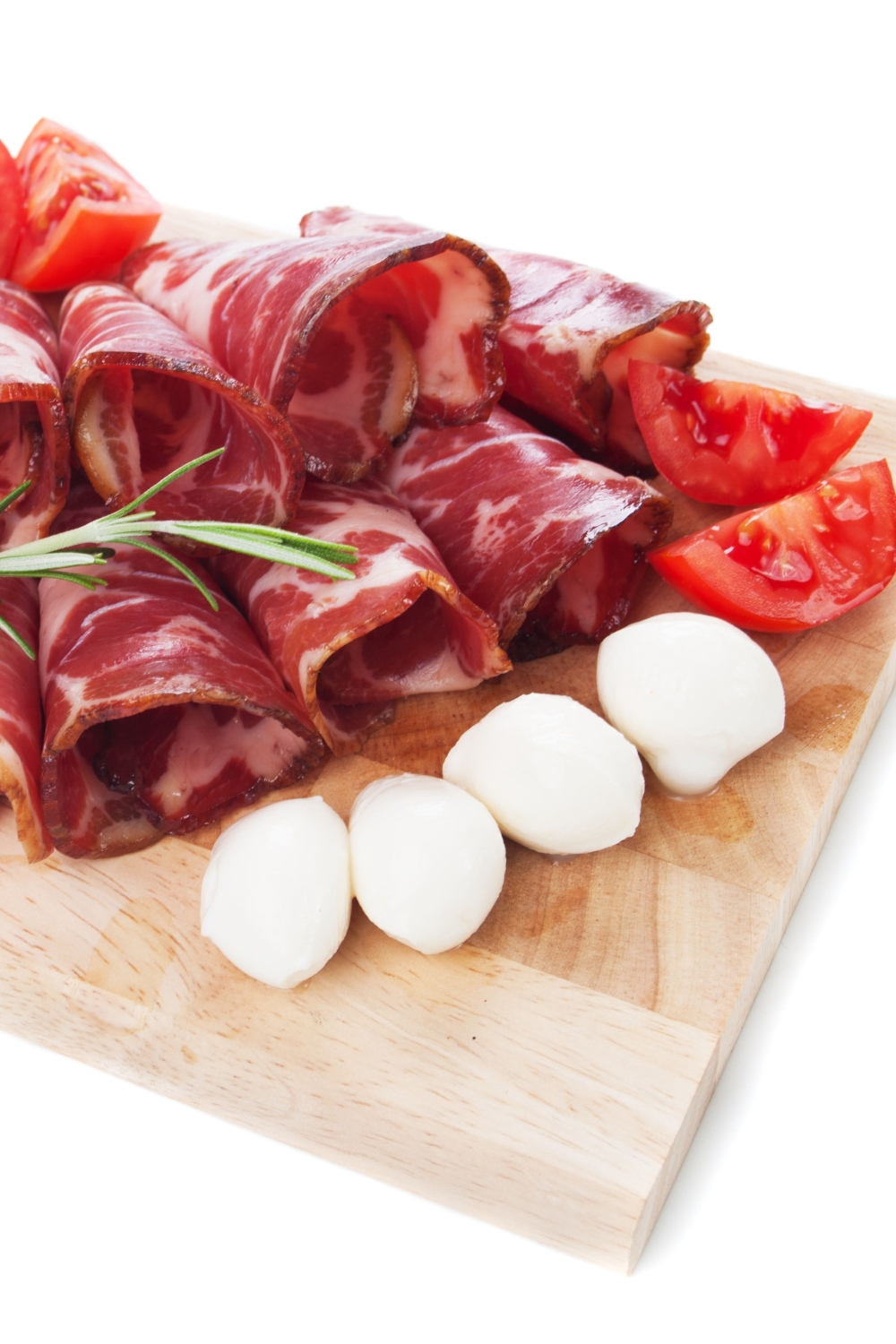
This Italian cured meat is a delightful fusion of sweet and savory notes, complemented by a careful selection of spices and herbs used during its preparation.
The gentle sweetness, which is the result of the curing process and the natural sweetness of the pork, is balanced harmoniously with a savory umami profile, derived from the exquisite blend of salt and spices.
The unmistakable aroma of Capocollo tantalizes the nose, inviting anticipation with every whiff.
The fragrance is a symphony of spices, featuring the bold notes of black pepper and the subtle warmth of fennel seeds. Undertones of garlic and regional herbs, depending on the specific recipe, add complexity to the overall aroma.
The slow and meticulous curing process allows these flavors and aromas to fully develop, transforming ordinary pork into a culinary masterpiece.
As the meat ages, it gains depth and character, with each passing day contributing to its exceptional taste.
The rest is up to you – you can enjoy this combo of wonderful flavors on its own, or you can pair it with some other flavorful ingredients (fresh fruits, cheese, or bread) to create an even more delicious experience.
How To Use It In The Kitchen?
From traditional Italian fare to contemporary fusion dishes, Capocollo’s versatility makes it a cherished ingredient for both home cooks and professional chefs. So, let’s take a look at some ways to use its magical flavors.
Classic Italian Panini

Embrace the essence of Italian simplicity by crafting a delightful Capocollo panini.
Layer thinly sliced Capocollo with provolone cheese, fresh tomatoes, and peppery arugula between slices of rustic bread.
Toast to perfection for a warm and satisfying sandwich that embodies the heart of Italian cuisine.
Also try some of these best sides for sandwiches.
Elegant Antipasto Platter
Elevate any gathering with a captivating antipasto platter adorned with thin curls of Capocollo.
Combine the cured meat with an assortment of cheeses, olives, marinated vegetables, and crusty bread.
The interplay of flavors and textures invites guests to savor a true Italian-inspired experience.
Culinary Pizza Perfection
Transform an ordinary pizza night into a gourmet delight by draping delicate slices of Capocollo over your homemade or store-bought pizza.
Pair it with fresh arugula, caramelized onions, and a drizzle of balsamic glaze for a harmonious blend of flavors.
Salad Sensations
Embrace the refreshing contrast of flavors by incorporating Capocollo into salads.
Delight in the combination of Capocollo with seasonal fruits like figs or melon, complemented by creamy goat cheese and dressed with a balsamic vinaigrette.
Charcuterie Extravaganza
Curate an artisanal charcuterie board with Capocollo as its centerpiece.
Pair it with an assortment of cured meats, cheeses, dried fruits, nuts, and a selection of savory condiments for an unforgettable grazing experience.
Are There Any Health Considerations?
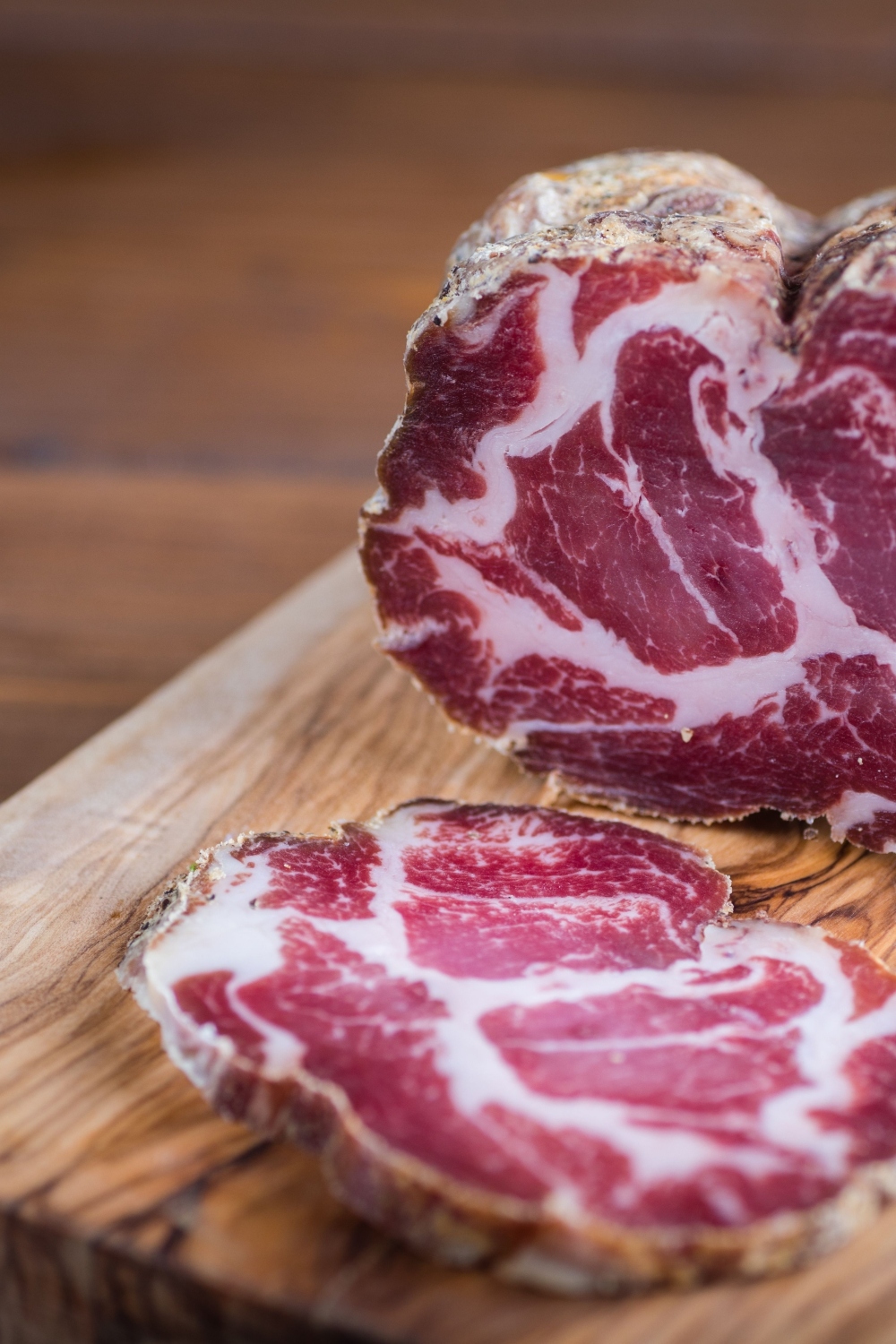
While Capocollo is a culinary delight cherished for its exquisite flavors, it is essential to consider its nutritional aspects and health implications.
As with any cured meat, enjoying Capocollo in moderation and as part of a balanced diet is key to savoring its delectable qualities responsibly.
• Nutritional Profile: Capocollo is a rich source of protein, essential for building and repairing tissues in the body.
It also contains vitamins and minerals, including vitamin B12, zinc, selenium, and iron, which are crucial in various bodily functions.
• Fat Content: As a cured meat, Capocollo contains a significant amount of fat, which contributes to its tender texture and flavor.
While some fats are beneficial, it’s essential to be mindful of the overall fat content and opt for leaner cuts when possible.
• Sodium Concerns: Cured meats, including Capocollo, tend to be high in sodium due to the curing process. Consuming too much sodium can contribute to high blood pressure and other health issues, so you should always enjoy these meats in moderation.
• Processing and Additives: Commercially-produced Capocollo may contain preservatives, nitrates, or nitrites, which help in preserving the meat and enhancing its color.
However, if consumed in high amounts, it may be harmful to your health.
• Balanced Consumption: To enjoy the flavors of Capocollo while maintaining a balanced diet, consider incorporating it into meals that incorporate fresh fruits, vegetables, whole grains, and lean protein sources.
This way, you will keep things on the healthy side.
• Portion Control: Being mindful of portion sizes is essential when consuming Capocollo. A little goes a long way in terms of flavor, and moderate portions will allow you to appreciate its taste without overindulging.• Dietary Alternatives: If health considerations are a primary concern, exploring alternatives such as leaner cuts of meat, plant-based options, or reducing the frequency of cured meat consumption can be viable choices.
